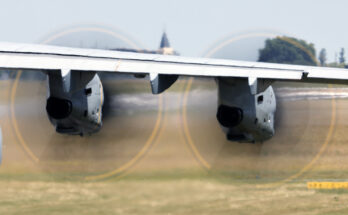A Russian official has announced that production of the Su-25 ground attack aircraft has stopped.
Russia’s Industry and Trade Minister, Denis Manturov, announced on February 7, 2017 that the Russian defense industry had ceased production of new Su-25s, a ground attack aircraft. Modernization work on existing Su-25s already built will continue, however.
Manturov suggested that the Yak-130, an advanced jet trainer, could eventually fill the role currently conducted by Su-25s. Though the Yak-130 is primarily used as a trainer, it features a number of hardpoints capable of carrying air-to-air and air-to-surface missiles, as well as guided or unguided bombs.
Previously, Russia has hinted at a replacement for the Su-25. Alexander Zelin, an aide to the Defense Ministry, alluded to a new plane in May 2012, saying, “This new type of ground attack aircraft has been included in the state arms procurement program. It will be put in service by 2020.”
Interestingly enough, however, Zelin noted that the proposal to base this new ground attack aircraft on the Yak-130 had been rejected, on the basis that the platform did not afford its pilots enough protection (the Su-25, by comparison, has been called a “flying tank” because of its armor).
It is unclear if Manturov’s comments, therefore, suggest a change in Russia’s view on the Yak-130’s usefulness in ground attack missions or whether Russia would simply develop a variant on the basis of the Yak-130 meant specifically for ground attack capabilities. Notably, the Yak-130 has seen significant improvement over the last few years which could impact the decision of whether to use it as a replacement for the Su-25 — particularly given that such a replacement is not needed right away.
In 2015, Russian firm Concern Radio-Electronic Technologies (KRET) touted the jet’s optical target-acquiring and navigation systems, which KRET CEO Vladimir Mikheev stated, “would allow the aircraft to attack ground and aerial targets from beyond the hitting area of enemy air-defenses.”
Mikheev pointed out that the Yak-130 will be able to carry Vikhr-M anti-tank missiles, R-73Es, Kh-29Ls, and Kh-25MS missiles. He specifically compared the combat suite to the Su-25, saying the aforementioned weapons “would make the combat capabilities of the Yak-130 close to the specs of the Su-25SM assault fighter.”
Video: #Belarus Yak-130 testing R-73 guided air-to-air missile (February 2016) pic.twitter.com/Qu0q9cJ29Y— Derek Bisaccio (@DerekBisaccio) April 6, 2016
For countries that are looking to procure the Yak-130, its dual nature as a trainer and combat aircraft can prove ideal and cost-effective. Particularly in counterinsurgency operations, the aircraft’s armor may not prove to be a relevant consideration as the operator country will likely have uncontested control of the skies and face little if any ground-based air-defenses.
But for Russia, the question of the aircraft’s armor remains, given that Russia’s potential deployments are not limited to just counterinsurgency. If the aircraft’s design intends to focus on stand-off munitions, however, durability like that of the Su-25 may not be necessary as the Yak-130 would be operating outside the range of opposing air-defenses.
Military markets analyst, covering Eurasia, Middle East, and Africa.




